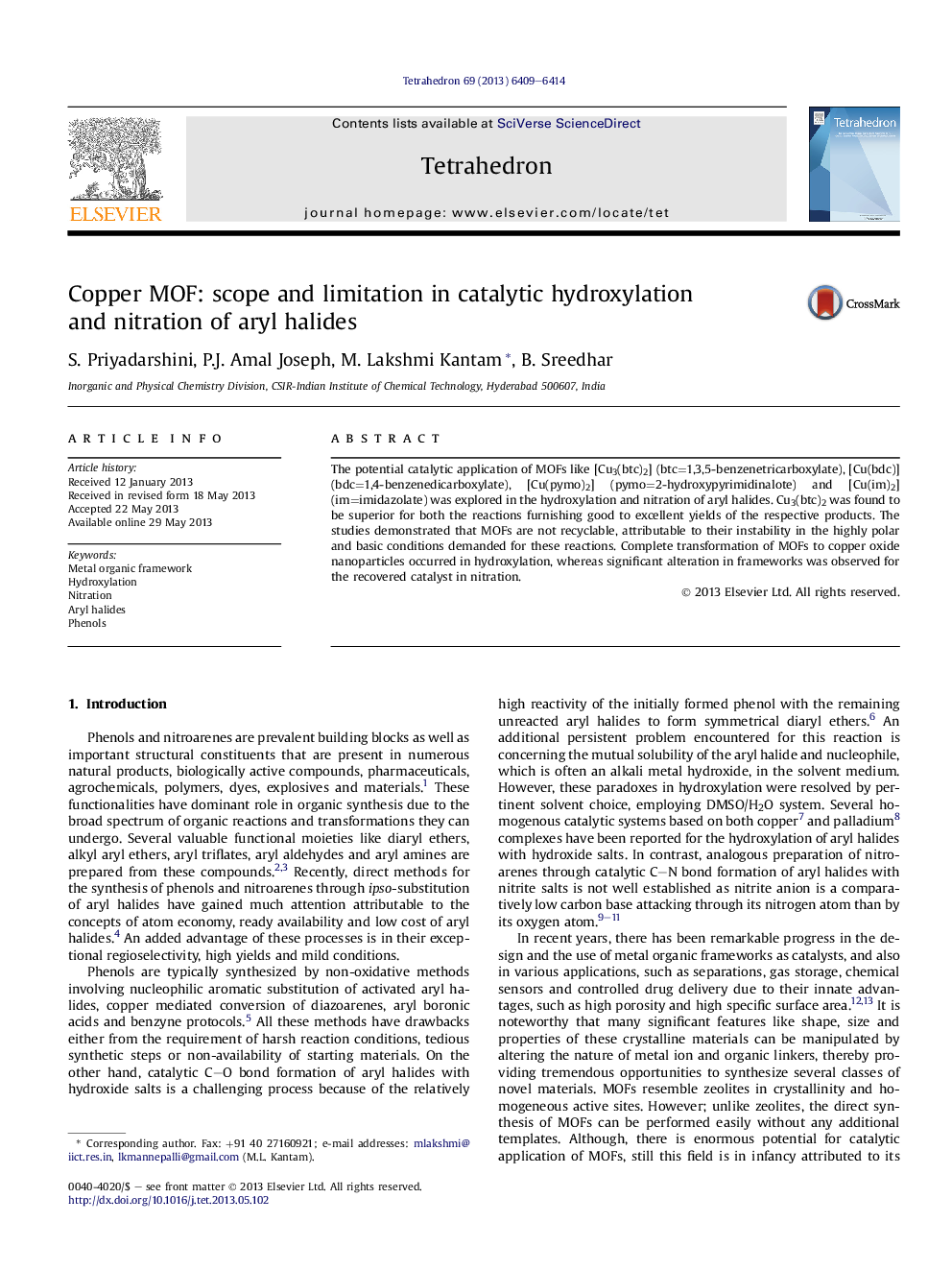| Article ID | Journal | Published Year | Pages | File Type |
|---|---|---|---|---|
| 5217857 | Tetrahedron | 2013 | 6 Pages |
The potential catalytic application of MOFs like [Cu3(btc)2] (btc=1,3,5-benzenetricarboxylate), [Cu(bdc)] (bdc=1,4-benzenedicarboxylate), [Cu(pymo)2] (pymo=2-hydroxypyrimidinalote)Â and [Cu(im)2] (im=imidazolate) was explored in the hydroxylation and nitration of aryl halides. Cu3(btc)2 was found to be superior for both the reactions furnishing good to excellent yields of the respective products. The studies demonstrated that MOFs are not recyclable, attributable to their instability in the highly polar and basic conditions demanded for these reactions. Complete transformation of MOFs to copper oxide nanoparticles occurred in hydroxylation, whereas significant alteration in frameworks was observed for the recovered catalyst in nitration.
Graphical abstractDownload full-size imageThe potential application of copper MOFs as catalyst for coupling reactions was demonstrated in hydroxylation and nitration of aryl halides
